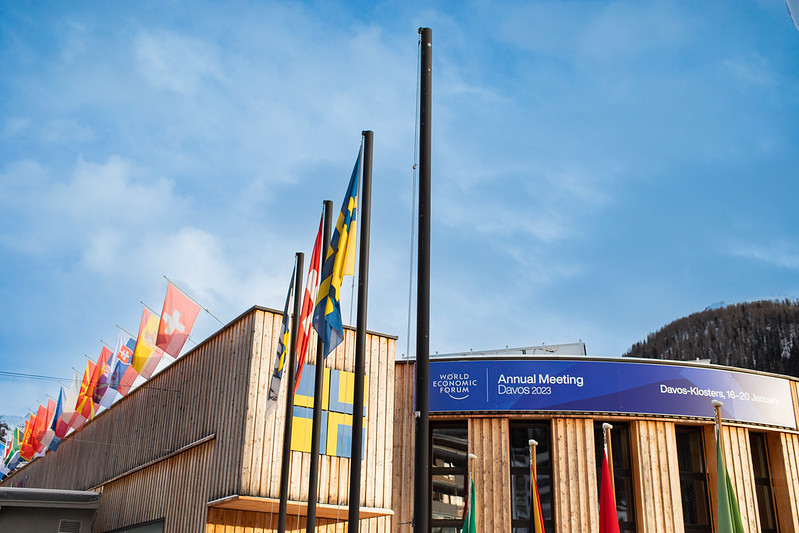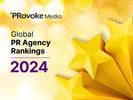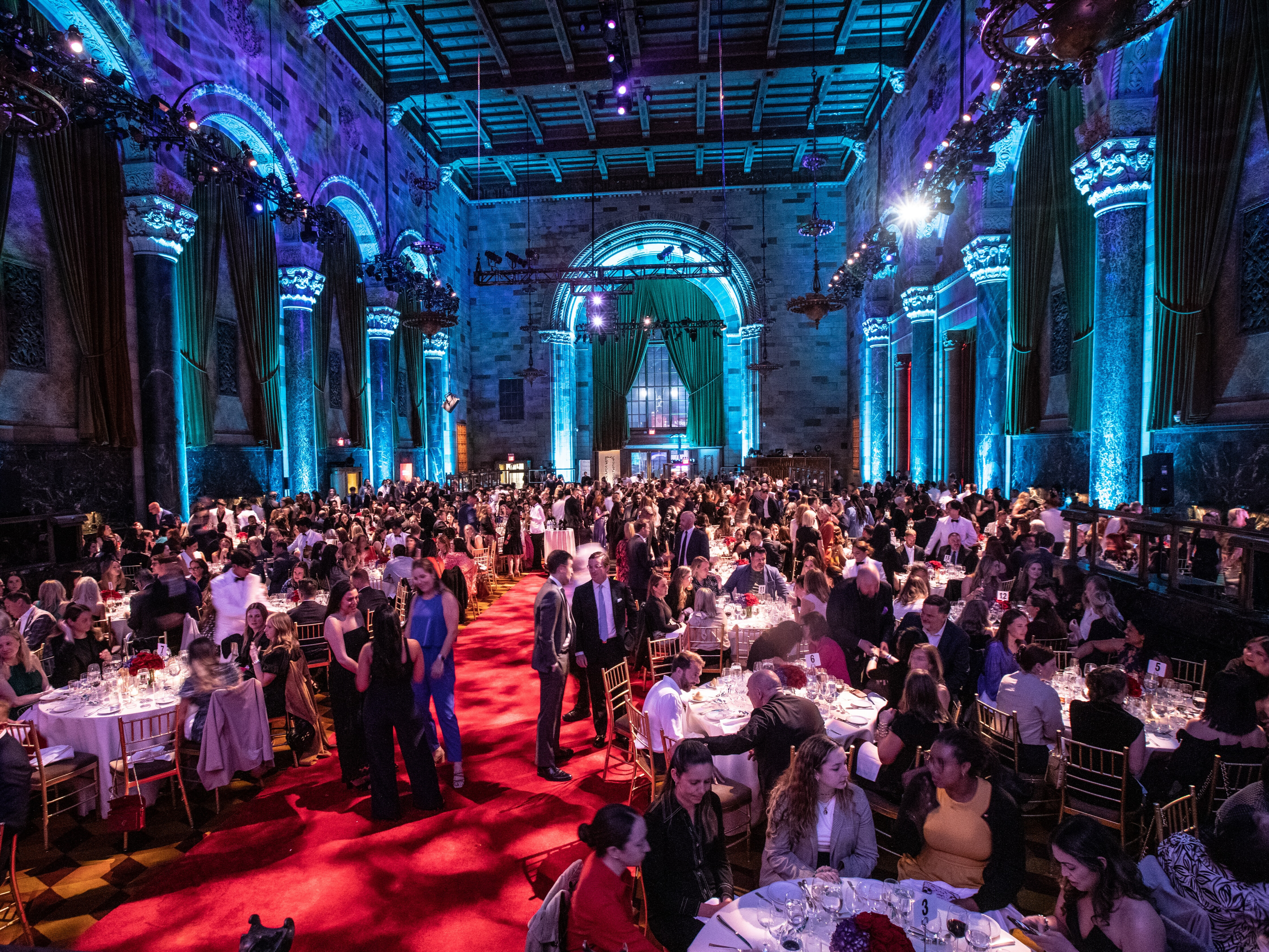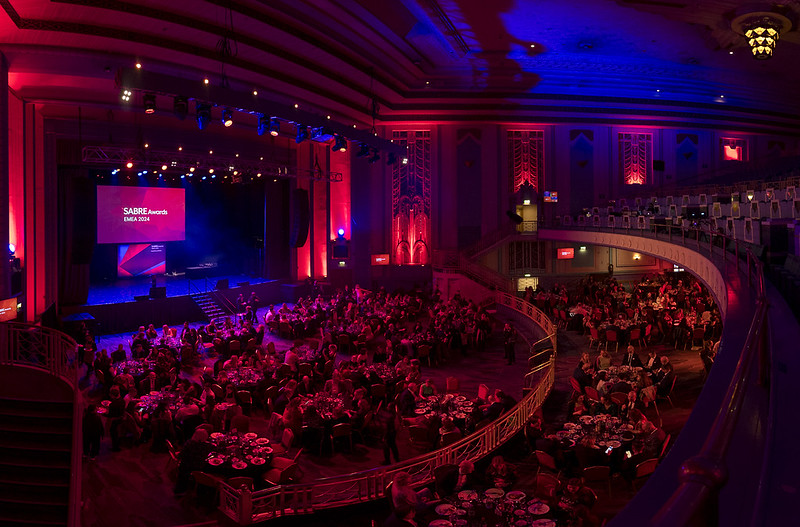Arun Sudhaman 06 Jan 2022 // 4:05AM GMT
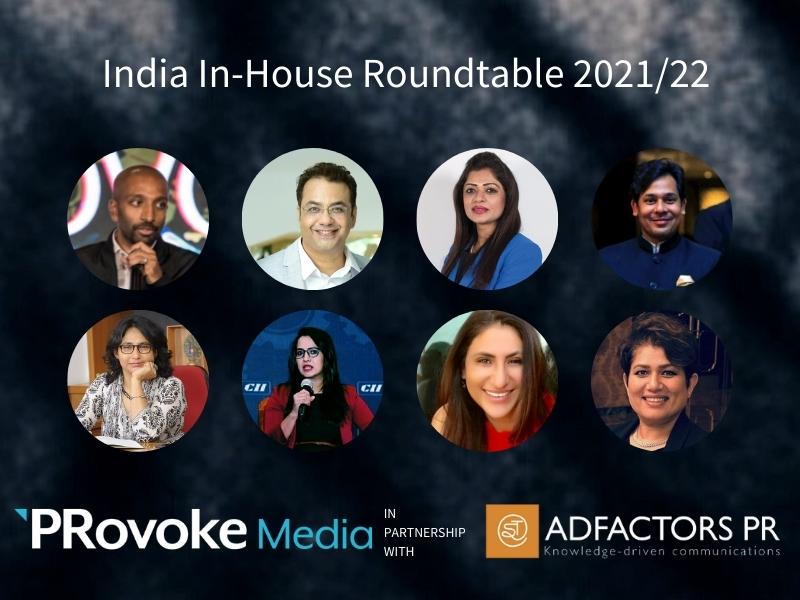
Few countries have been more affected by the Covid-19 pandemic than India, which has fought hard to navigate disruption and destabilisation on a scale that is sometimes hard to fathom. That experience has had significant repercussions for the nation's top corporate communicators, entrusted with a critically important mandate while suddenly getting to grips with the vagaries of remote working.
To better investigate how the public relations playbook has been transformed by the experiences of the past two years, PRovoke Media partnered with Adfactors and APACD to convene a two-part virtual roundtable of the country's top corporate communicators.
Part one features the communications leaders below from traditional corporate powerhouses. (Part two, focusing on new economy players, will follow later this month.)
The closed-door discussion took place last month and featured:
- Dimple Raisurana Kapur, corporate comms head, Pernod Ricard
- Kritika Saxena, corporate comms & public affairs head, TCS India
- Minari Shah, PR director, Amazon India
- Rishi Basu, corporate comms head, Infosys India/AP
- Shalini Singh, corporate comms & sustainability head, Holcim India
- Sujit Patil, corporate brand & comms head, Godrej Industries
- Varsha Chainani, group comms SVP, Mahindra Group
- Arun Sudhaman, editor-in-chief, PRovoke Media (moderator)
The discussion began by asking the assembled participants for the key communications lessons that they have learned from the pandemic era. These, unsurprisingly, perhaps, were as the diverse as the nation in which these executives work. They spanned trends which have been seen globally — employee wellness, agility, corporate authenticity — to some that are particularly pronounced in India, including political polarisation, a dramatic talent crunch, and the rapid elevation of social media.
Shalini Singh (SS): The one lesson which became very critical is that each member of your team needs to be digital savvy. You don’t realise it and you actually hired a digital person to take care of digital needs, but it has become such an integral part in other forms of communication. The whole share of voice from online has become so critical for us now, even in manufacturing. That was always considered to be good but it never outperformed traditional PR. Even for me, upskilling on digital for the various members of my team irrespective of what roles they play — that’s one thing that we’ve learned and we’ve quickly come to speed on that. Traditional PR in that sense has actually got cannibalised a little bit.
Varsha Chainani (VC): I found increased focus on what the workforce and our employees are actually saying. I think wellbeing of our employees is something that is going to stay with us a long time. It’s almost like going back to basics, but that was the centre of communication and that’s really what we draw from.
Minari Shah (MS): The one learning for me out of these last two years is bigger than the comms role, though the comms teams played a very important role. And that’s really lives over business. When the second wave came to India, it kind of caught us by surprise, and we were all learning as we went to bat. We just kind of said that we’d put all the business aside. We will keep the focus on making sure that the supply chain continues for the critical items, sourcing concentrators or masks or whatever, but beyond that it was not business as usual. And I think the agility and speed and heart with which I think not just our company, but a lot of companies, doing the things that really mattered — of saving lives, of rushing to do things both internally and for the communities and people. I think that was immense. The support that we got from our own teams rushing to create what we call Covid warriors who were literally volunteering night and day.
The other big thing was just innovating and inventing, really. How do you really reach the important information to all your employees? Creating internal wikis and links and newsletters which were constantly giving this information that is easily accessible. And anyone who has ever questioned internal comms, if there are still those people who wonder about the role internal comms plays, I think this was one time, we had this organic outpouring on LinkedIn and social media from employees that we had their back. So I think it came from recognising that the first important part was doing the right things, to save those lives above everything else. Then came making sure that the right communication was going out, that it was sensitively handled, calibrated and all of that.
Sujit Patil (SP): We serve 1.1bn consumers every day. Our learning has been very simple: shut the microphone and put on the headphones. I think that’s one thing which is absolutely important because we find that consumers have become very vocal today. The potential for us to get in the crossfire of narratives which will be detrimental for our brand were very high. So I think listening took centre stage. Audiences have suddenly become very short-sighted as well as intolerant to things which can be seen as pompous about your brands. A simple programme of distributing free sanitizers to people is seen as a brand push. The second learning was that AI for us was no longer artificial intelligence, it was more about our authenticity and inclusion. We found that most consumers want to be part of the brand narrative, they want to be part of the brand story. How do we actually connect with them in a very authentic and a very in-depth manner so that they become the centre stage? The protagonist has changed from a product to the customer, so your dedicated consumer platforms actually worked really well for us rather than paid advertising or newspapers.
Dimple Raisurana Kapur (DRK): I think the lens with which organisations were viewed actually changed dramatically. It was no longer about how effective you are as a business but how human you are as a business. Not every business had the luxury of holding on to all of its employees, much as it would like to. So, it was a lot of emotional churn — a lot of us were forced to become resilient. But, I think what really put comms at the centre of it all was to manage. It was really like we were a bridge to employees — even if it was a very harsh decision, how you actually did it in the most human manner possible, that was where comms really came into play. Comms became in many ways not just a brand custodian but the voice of the organisation, the conscience of the organisation. Asking how can we do this better, how can we do this more authentically? Looking at how businesses became more patient, more empathetic, more humane and also at the same time were effective from a business perspective. I don’t think that was a win win but how would you ensure that everyone’s interests were taken care of in the most optimal matter? And when I say optimal, really there are no best cases across the industry.
Rishi Basu (RB): One lesson was to focus only on the stories that truly needed to be told. If there was a trial by fire on this front it was during the height of the pandemic last year. It was a reminder that understanding the landscape we are in is critical to telling important stories and it was sort of a reminder to the 101 of PR and communications: conduct an inventory of resources, conduct an inventory of data, stories and experts that we can offer to our media family to support coverage of what was most important at the moment. It was also critical to conduct real time monitoring and follow breaking news, keeping up with our favourite journalists via our own curated lists and responding with relevant content when they were reaching out to us with requests for stories around the pandemic, work from home, how have we mobilised our workforce and so on. There was also a need to update messaging, whether just for our clients, whether for websites, business, social media, to ensure each of these assets reflect the state of news and catered to the key audience priorities. I think all of us agree social media has become integral to the PR strategy and more than ever during this period of time. It is very important to have social media integrated with your PR strategy. I personally feel that builds a mutually beneficial trusting relationship between organisations and our target audience.
Kritika Saxena (KS): I saw the pandemic as a bureau chief and corporate head at CNBC and I shifted (to TCS) during the pandemic. The one thing that stands out for me is that storytelling as an art form has become as relevant now as it ever was before. I thought that even as a journalist, where stories have changed. The importance of the human touch in stories is relevant if you’re a comms professional or a journalist. I saw that shift happening within the company where comms has now become a boardroom decision, it’s a boardroom function, it is a part of every strategy you make. It’s our game to lose, literally. To give you an example, IT services is going through one of the biggest talent booms that it has ever seen. This has actually been the most innovative time to communicate with employees. And the kind of engagement we are seeing is massive. One LinkedIn post gets 15,000 views within seconds. Everyone can be a storyteller, everyone can be brand ambassadors and I think that pretty much gives us a kind of a tool of sorts to be the decision makers. I loved what Dimple was saying: you are pretty much the voice and the conscience of the soul of the organisation and as long as you are humane, you are transparent and you are real and authentic, that is all you need in your story.
Raisarana Kapur's observation regarding the lens with which companies are being viewed is as pertinent to internal communication as it is to external activities. There has been a significant change in terms of the expectations of corporate behaviour, perhaps accelerating a trend that was already underway, but ultimately serving to heighten the authenticity required of companies. That could be in terms of their efforts to save lives and reassure customers, as much as it could be about the safety and wellness of employees.
Accordingly, the assembled communications leaders examined how changing expectations of corporates are reshaping communications roles and strategies, and what this means for their operating assumptions and plans. It's received wisdom now to assume that the communications role has become more strategic and more valuable, but is that truly the case, and what implications does it hold?
This was a question that sparked a certain amount of divergence among our attendees. While no one would disagree that things had changed, there was less consensus on whether these changes are structural shifts that will last with us beyond the pandemic, or more of a tactical refinement of existing strategies. Either way, it seems clear that the Indian corporate communications leader's mandate has never been quite as substantive as it is today.
SS: The focus is so much on employees and brand ambassadors. We have globally, starting with India, gone ahead and formalised this into a programme called Be Social Ambassadors. We have encouraged our employees to actually post their experience on building programmes, health etc. proactively along with organically supporting initiatives that they really like. We have also used this network to showcase their exceptional volunteering work during Covid, to be shared in the outside world. Getting showcased and getting recognised is something that is going to be consistent effort from the organisation. Because they have learned the value of how employees can be the best brand ambassadors and it is organic, user-generated content. I’m not posting anything, my digital team is not posting anything, it’s just out there for people to talk about their experiences. Especially when they help other companies. This is one crisis which united people. We did not bother about the next door cement company as competition. So what? When it comes to helping, people have collaborated and the theme in the streets is to go out and help the communities there.
MS: I have a slightly different point of view on this. If I look at it really closely, I don’t know if my role is changing strategically. At least from where I work, comms was always super-critical. What the last two years has done is accelerated some of the integration that we were looking for. Whether it’s internal and social and PR, whether it’s how do you work internally, whether its sustainability or community effort, I think many of us were already trying to bring this in and different organisations were in different parts of that journey. I think even the recognition that companies can’t just be about business but there needs to be a purpose has, I think, been there. The last two years has really sharpened that very strongly. The changes therefore are sometimes tactical. It just might be — how do you do the story telling? Experimenting with formats, experimenting with content, sharpening the stories in a different way. Perhaps it taught us to pivot faster.
I think the one change that I think will stay with us is the empathy, is the humanity. People matter. A lot of us are going back into offices, are going back because they miss meeting our people. A lot of us are going in because we really want to have people around you, interact with them. Those classic conversations, those lunches, I think those matter. And to me I think that is the lasting change. I don’t know if my comms strategy is dramatically different today than it was two years back.
RB: We are a very large global workforce and you have to be empathetic towards anybody’s situation or anybody’s whereabouts. And I think we have learned to become more thoughtful in our messaging. Before the pandemic, even if I look at the media side of things, all of us would meet with media persons, journalists, we would meet in person frequently, and they were real chats and not written messages. Now with people working from home and not necessarily bound by the nine to five, lines are blurring. Communication is more asynchronous and people are relying more on responses in writing. Even video chats are becoming more planned than impromptu. At the same time, I also feel we have become more thoughtful in our choice of messaging platform. We are increasingly relying on metrics and data to tell us if we are hitting home with our messaging and targeting. This efficiency and, if may I say, this efficacy has become very critical in times of crunch resources. I wouldn’t say those have changed my strategy or my role greatly, but I think communications has become integral to the whole 360 degree experience that organisations are going through today.
DRK: When you talk about the authenticity of the brand or even the fact that we are under a very, very sharp lens — what I personally saw was the consistency of a message or how you communicate it across stakeholders now suddenly became very important. Initially, I think even before the pandemic, different functions did their own thing, they pushed out communications in a very unique way and that was fine. Of course there are messages that you want to push out to different stakeholders. But given that every stakeholder now actually had a comment or a perception that they were very open to even expressing, it became so much more important to look at every different piece. Whether it was sustainability, CSR, employee, investor relations, government, NGOs, policy makers — just making sure that you stitched those things through really beautifully. Bringing it some sort of consistency to create one beautiful tapestry that actually drives the corporate and brand narrative seamlessly. I think it became so much more important to do that.
The other thing is that 60% of our workforce across 30 countries are Gen Z or millennials. And they are no longer enamoured by brands. Just a large company with X number of revenues, profits is not inspiring for them. What they really relate to are brands with purpose. Who you are, how authentic you are. You could have goofed up, but how beautifully you can actually own up? What we really realised is that people across stakeholders are more willing to accept and forgive, even mistakes and errors, because they now look at brands and corporates as humans. As long as you are humble, actually communicating and accepting challenges, shortcomings, even weaknesses, but also looking at how we could empower people to not just thrive but to actually survive. How beautifully you actually could extend the corporate personality in everything that you do, see and even speak.
VC: All our stakeholders, everything has changed. Consumer needs changed. The way you could talk to consumers has changed. What they expect out of a corporation has changed. Communities and how they look at organisations supporting communities and what they should or shouldn’t do has changed. I think there has been change and ambiguity everywhere. It has made us softer, and more responsive to people. I truly feel that is a huge difference in the way we communicate today. All the loss that we’ve seen; from our employees' perspective, people feel that loss even today. Communications is no more about communications teams communicating. It is really about how do you enable your senior leaders to communicate differently, uniquely, actively and more humanely with your employees? Their voice and their tonality has changed in the way they want to talk and how often they want to talk to people. So it is people first. How authentic you are to your purpose and are you living it.
So, I think has communications changed our lives and people’s lives over the last two years? Absolutely it has. I do not think we can be the same communicators we were two years ago. The agility, the skillsets, the kind of talent, how and when we communicate, what we communicate. I think everything has changed, truly, and it has changed forever. It is going to be the nature of the beast as we go forward as well. You are going to be dealing with ambiguity, crises, issues, social media, all of that, all the time.
KS: We had to become more humane eventually. Our messaging had to become more precise, we had to become more integral to the organisation. What this pandemic did is actually a blessing in disguise because I think it would have taken five to 10 years of very slow, structured approach to get to where we are today, where everyone has realised these points — be it messaging, be it multichannel communication, be it reaching out to the media differently, be it emphasis on story, be it front and centre of employees and brand ambassadors. All of these areas were slowly transforming, but their transformation has just catapulted. We’ve all touched upon the importance of agility, but it may not have happened two years ago. The agility with which we can not only formulate the messaging from scratch but shift that messaging, that agility with which organisations can respond to their people to their customers, to their employees, has transformed in a way that perhaps may not have happened.
SP: I fully agree with Minari. There’s not been any significant change in our strategy. I think the strategy for communication remains the same. One of the biggest things I found within the organisation, was all the functions actually came together. The collaboration levels suddenly shot up. The last two years I’ve been speaking more with marketing, I’ve been speaking more with supply chain, I’ve been speaking more with legal, with finance, with every function. The camaraderie, the way we speak to each other, the way we collaborate, the way we share information has gone a few notches up. That was not the case some years back. That has shaped the whole way in which we service the C-suite. Master the basics, which are necessary for running a function, sharpen the best of your operative verticals, immerse the new and kill the rest.
[A big trend we saw was] in terms of data driven communication. The media doesn’t have the space to carry your stories now, and they are willing to take it if it’s backed by data. The whole work of research driven narratives within the function is now moving. The second most important change that we saw was, rather than going behind these big name influencers, we started going to micro influencers. Rather than Amitabh Bachan getting signed up, there can be 10 smaller influencers in Lucknow that deliver me more engagement for my brand. That’s again part of sharpening the best vertical. The third important thing that we started trying to digitise much more, — our whole media platforms, the direct to consumer verticals. They have given us a lot of benefits. In terms of the drivers for bettering communication, we don’t call it ROI, it's return on objectives. In my conversations with the CEOs, they look to us in terms of how can we better the outcomes and objectives they have laid out for the business.
Whether a seismic event, or an acceleration of trends that were already underway, the change itself is perhaps the only aspect that matters. Because change brings opportunity. Saxena, for example, described the situation as a "blessing in disguise", for helping to focus corporate decision-making, making empathy non-negotiable and redrawing what people expect from brands.
But change also brings challenges, as we need little reminding of during the Covid-19 era. Understanding how to navigate and overcome these challenges is what will determine the lasting ability of the corporate communications function to capitalise on the opportunities our participants had earlier outlined.
SP: It’s all about earning the trust and basically holding on to it. The scrutiny is very high. The way consumers and your stakeholders are viewing you and judging you has changed. The smallest of your behaviours are noticed and if they are even a bit pompous they are called out. So the biggest challenge for any communications professional is how does he or she moderate that narrative to make it actually authentic and inclusive rather than just whitewashing it. It’s all the more important for communications heads and CCOs to actually be on their toes. Today the biggest issue is not only what the official spokesperson says but a lower-ranked employee putting up a post on social media which may have a hint of anything that is derogatory or smells of some kind of a bias. We have seen the examples. That trend escalating and coming into the crossfire is becoming huge. People suddenly found too much time and empty mind space to troll people.
Arun Sudhaman (AS): There’s two trends in play there in a way. If you’re empowering employees, it goes both ways. They have control. The second trend which we haven’t talked about is also just the rise in the politicisation of everything.
SP: Exactly. I didn’t want to use that exact word because it is quite sensitive. The whole polarisation, the whole issue between the right and the left. I think that is killing the reputation of brands, because you never know who supports what party and how the other party reacts. It’s very complicated. I think it’s important to have policies and norms to manage all that.
DRK: One very interesting trend we have seen is increased brand promiscuity. Brand loyalty is a thing of the past. Large celebrities no longer resonate with consumer tribes anymore. It is your local, so-called 'knowledgeable dude' that perhaps carries more weight in terms of what consumers will go with, because they feel it’s more authentic. It’s probably more believable. Not only are consumers brand promiscuous but they are also looking for more bespoke experiences. Everything is a touchpoint. How does it speak to them personally, how is it relevant to them? More personalisation is going to come in, more experience-driven initiatives. The other thing is this whole digital world that we are now forced to exist in. Meetings are digital, consumers consume information on digital first and therefore how do you marry experience, digital and personalisation with authenticity, with more neighbourhood credibility? I think that’s going to be the new challenge and the new paradigm that we all have to actually learn to thrive in.
MS: The Amazon PR team had about 20 joiners in the last two years, and these are people who most people haven’t met, the rest of the team. I have had a lot of them tell me how difficult it has been. Some of you here are people who have joined organisations in this period. And, imagine — we are in a role like communications where we rely so much on how our leaders are thinking. To really do this in a very dynamic, fluid environment, I think, is the biggest challenge. What has happened and will continue to happen, pandemic notwithstanding, is just the dynamism of the environment, the evolution. I don’t think it’s enough anymore to have a social skill set or to understand the media or even storytelling or digital. No, it’s about all of these. It’s about really knowing all of these and by the way you must understand HR challenges, finance challenges, P&L, accounts, understand what the customer insight means. We are building teams which really must understand deep diving, and leaders across the board should feel confident talking to these teams. I think it is a phenomenal opportunity for everyone who is in the industry now. It’s a challenge but it’s never mattered more. That is the challenge but it’s also the largest opportunity out there to really make a difference.
RB: All of us have faced challenges with [remote onboarding] and I’m facing challenges in my team as well. I think the fundamental problem there is that while our focus is to ensure seamless remote onboarding, the challenge lies in people who are onboarding themselves are not able to internalise the company in a way that we would do in a physical atmosphere. And also, the role of a communications person in this pandemic period is to fundamentally alleviate concern across your stakeholder community. In that scenario, the ability to deliver content value over noise, that is a problem I think which has grown and will keep growing with people increasing their digital consumption of content. Because nothing is more interconnected than digital today. Of course we talk hybrid models of work and we all adopt it, but the challenge does remain that if you are in a hybrid model of work there will be a drop in communication at some level which may have a larger impact over a period of time.
VC: Communications is getting more and more materially important to the CEOs, the board and the C-suite. That’s absolutely a fact. What I think is a challenge for us and especially people on this table today, is that the expectation of a CCO is no more of an expectation of the CCO but each team member. So it is not about a Shalini rising and giving counsel to the board on how we are perceived, but it is each one of our team members being a Shalini and a Minari and a Sujit across the board. I think today the challenge is about, how do we have a multiplier effect across the teams, because that’s the role of a communicator today. How can we have that talent which is able to join the dots, is able to support transformation. How do we multiply more of us across the table and get that pool to kind of bring up the level of expertise. So they need more CCOs in one organisation. It’s no more OK to have one CCO across the group. But more and more of us and each team member bringing that expertise to our C-suite.
Of course, any gathering of senior in-house communications directors would find it difficult to avoid the topic of agency support. Noting that "talent is the biggest crisis in the industry," Shah followed up Chainani's point above by noting that "agencies need to stop being so siloed," opening up a provocative, if one-sided, discussion of how agencies can improve. Perhaps an agency head would like to respond, if only to help drive progress on issues that certainly seem to be causing a measure of concern.
MS: Talent is the biggest crisis as an industry. I don’t think we have enough talent in the industry but, agency side, I understand that there are issues like attrition. I speak to most of the agency leaders fairly regularly, but the one thing they really need to look at — which is controllable input, as we would put it in Amazonian language, is the structures that they have for their companies. They are so siloed. We will provide you with PR support but not digital. There’s a separate team which is going to do internal or there’s a separate team which is going to do executive writing. It doesn’t work.
KS: I think it just comes down to the talent crunch, and it is across the board.
MS: I can’t have a team person who is looking at traditional PR and is not looking at social media. Agencies cannot have account teams which are focused only on one and don’t understand the other. We are looking at 50, 60 cities at the very least. And they need to really start finding the talent and that might mean something far more dramatic than the kind of superficial things that have sometimes happened in the agency world.
RB: My challenge is slightly different. While the agency that I work with, of course I consider them an extension of my team, and we have a phenomenal and crazy ask for metrics. That works fine because I don’t think many other companies ask for metrics the way we do. Where my challenge lies, and I’m articulate on this to our agency members, is subject matter expertise. If you are working for an account which is in IT services, I’m not saying that you need 100% dedicated employees to my account but you need some level of subject matter expertise to make informed recommendations. That I think is a big missing part in the agency ecosystem.
DRK: It’s frustrating to work with different teams and different levels of understanding, especially during a crisis. All communications functions within organisations are looking to integrate digital, social media, CSR, sustainability, internal and external communications, under one umbrella. I think there is a need to quickly move teams at least under one account leader that can actually can do the job for you instead of you having to deal with different teams. What happened during the pandemic was everyone realised that, yes, digital is a need and yet, at an agency level, I do believe that digital is still not given precedence or equal weight compared with the media teams. I think the time has come to actually change those dynamics across the board, not just at agency level but also for us. But if you look at it from a corporate reputation point of view, all of these must seamlessly integrate whether it’s your content, whether it’s design. You might have a great digital agency but the design aesthetics are dismal. Very often we do actually consider them and work with agency partners as extended arms. That is something that they can actually leverage and look at that as an opportunity to expand not just their scope of work but the impact that they bring to CCOs and comms mandates at organisations. I think the dynamics can also change and it can be a win win situation.
KS: I think the problem that I’ve understood, perceived in both my roles is that agencies are often perceived to be executors and not the strategy leaders or the thinkers. So I find myself struggling. It might not be the account manager, it could just be the PR executive, but they are still looking at you as a client and thereby looking at themselves as just executors of what needs to be done. I’ve seen people with 21 years of experience just handling the logistics. So I think that’s our responsibility as well to an extent. I agree with all the points that you made that it has to be streamlined, but I feel as comms teams we also need to engage with them. They are in the midst of talent shortage just the way we are and I think we need to also make their role more strategic and executive and if we can’t then we enforce that change. I feel that if you are not going to be very strategic with our agency, if you are just going to leave them to be executors, we are actually going to suffer together. Again, are agencies pushing the envelope? I don’t know, but I feel that is the one thing I would require as a change immediately in a very big way. I myself see my agency playing a role whenever I make a decision, but I think that needs to happen across the board.
SP: If you really want to have the hearts and souls of your agencies rather than just their arms and legs, I think we need to treat them that way. I think the onus is also on us corporates and public communications teams and corporate communication and brand leaders. It works both ways. We should be giving them the time and space. I think the pandemic is probably an aberration — the service level has gone down drastically low, but there were great times also, so I think maybe as we move to the other side things will improve. I think it’s more patience, perseverance and higher collaboration. We talk about empathy for customers, we talk about empathy for stakeholders, we can get a little more empathetic to our agency partners I believe.
MS: Not taking anything away from the need for empathy, but I’ll give you an example. We are a very large, demanding company where there’s something happening almost every day. And given the pace and the demand, we are happy to pay the top dollar. We actually do pay very large retainers, we are happy to build fees in, but we do ask for really strong, larger teams. Now, agencies are struggling to find people who can service these accounts because they have high attrition. The reason we have five different agencies is indeed because we realised agencies simply cannot have enough people to meet the needs that we have. What the agencies are ending up doing is rather short-sighted in terms of how they look at their P&L because they are squeezing their teams so much. Even when we say we are willing to pay top dollar, give us at least a person which is dedicated to our company so that they actually can work as an extension of our teams because we all work crazy long hours.
We want them to have that space and time, and we are told that we are dedicated to you, we are charging the fees and everything is negotiated on the basis of that. But invariably the ground reality which my teams are telling me, is the younger ones are invariably doing all of the work. Senior guys, you anyway expect them to be shared resources given their level of experience. We are not expecting them to be only ours, but the amount of time the senior guys actually make is just ridiculous. They come up with these very superficial statements which mean nothing and you stop going to them. Because they just don’t know your business, they don’t know what’s happening. You talk only to the younger guys. There are good senior guys, but they are not involved because they are stretching themselves, spreading themselves so thin that they have no time to really understand what their client actually needs and what their client requirements are, and most times their suggestions strategically are like three years behind what we might already be doing. So I think it’s time agencies caught up. We really need agencies, we want to treat them more strategically, we invite them for a lot of those conversations, and we understand that there is a challenge about retainers, but they can start having those conversations with at least their large clients.
KS: If you get to the root of the talent crunch, there’s a huge gap, and I guess that’s there in corporate as well, in the senior most person on the account and the person who is actually doing the legwork, with two to three years experience. The pay gap is truly massive and I think if you have to address this talent crunch and make it more equitable, that gap needs to be met. There’s a reason why there’s churn happening in two places across our industry. It’s either journalists who are shifting across the border or it is PR executives who have pretty much been doing the legwork but are paid 80% less than their superiors. So I feel that is one thing that I think needs to be addressed soon.
AS: This is a persistent issue with agencies wherever we have these conversations. Around the model and in fact whether the agency model is still fit for purpose. We don’t have an agency in this session, but I suspect they would say that this model has evolved in response to their customer needs and they don’t necessarily feel that there’s the level of investment always to support change. But you hear the same things on the agency side. Clients are too siloed. They’re not investing enough. They don’t understand what we need.









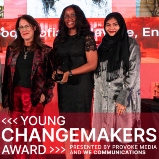












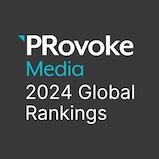












.jpg)












